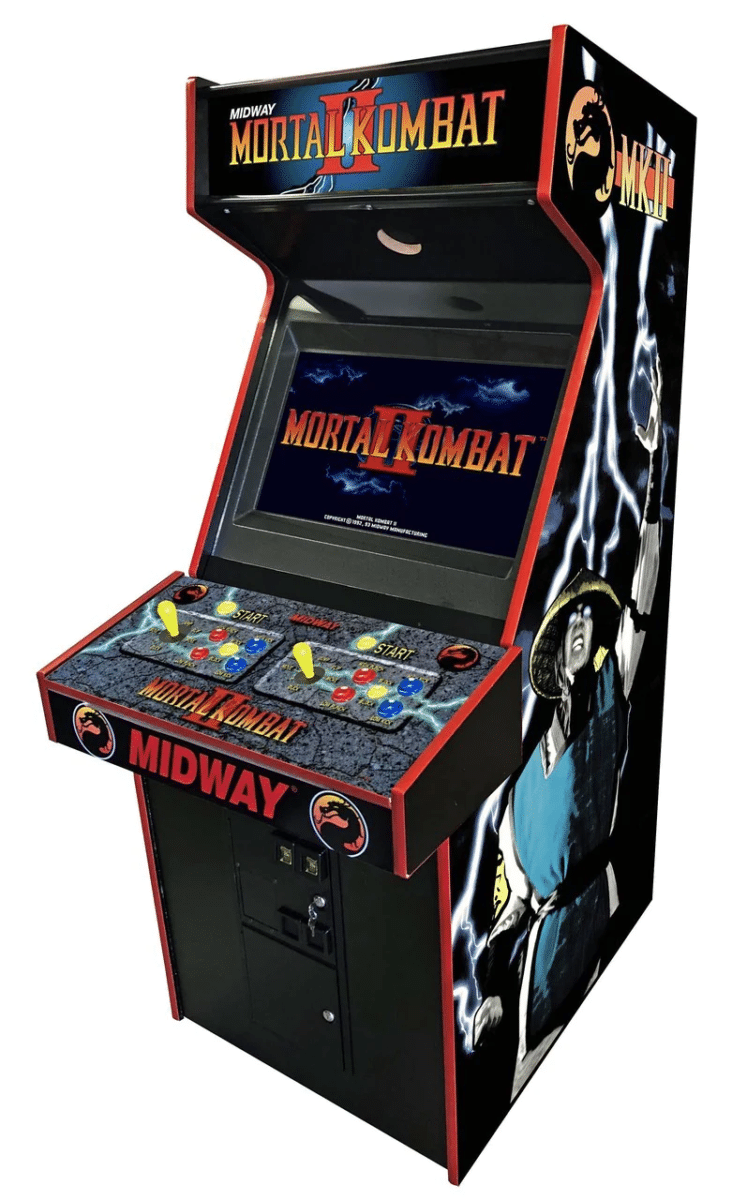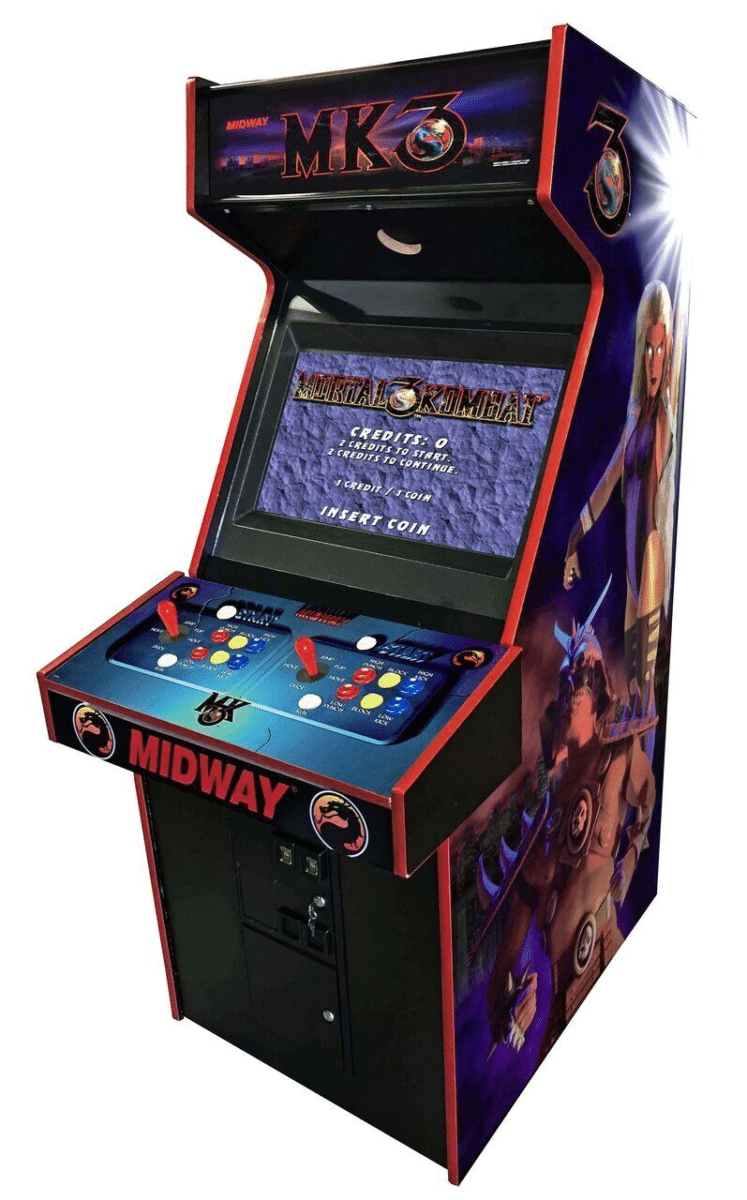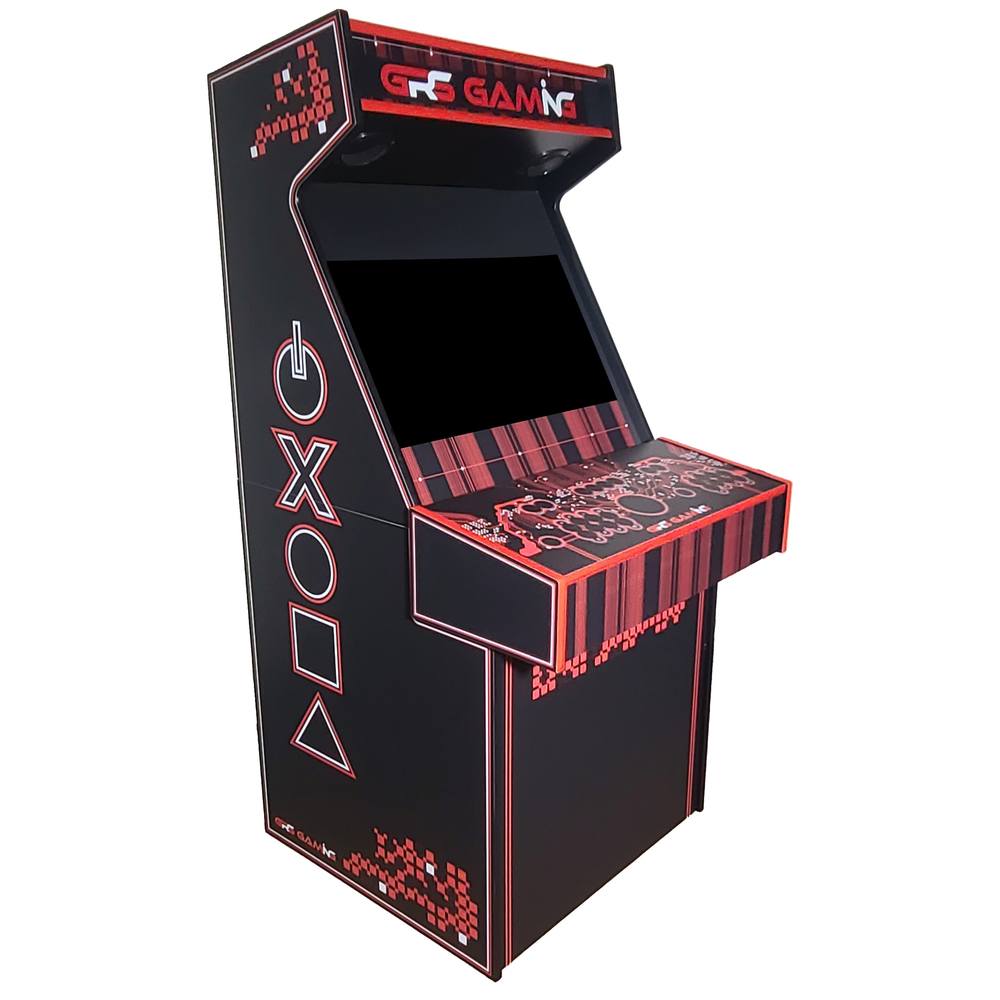A Brief History
The Original Mortal Kombat
The Mortal Kombat arcade machine first hit the scene in 1992, developed by Midway Games. Its creators, Ed Boon and John Tobias, aimed to create a new fighting game that would rival the popular Street Fighter series. The game quickly gained a massive following, thanks to its unique characters, gory fatalities, and captivating storyline.
Mortal Kombat II

Mortal Kombat II was released in 1993 and built upon the success of the original game. It introduced new characters, improved gameplay, and offered more brutal finishing moves. The game also expanded the Mortal Kombat universe, delving deeper into its rich mythology.
Mortal Kombat 3 & Ultimate Mortal Kombat 3

Following the success of the first two games, Mortal Kombat 3 was released in 1995, featuring new characters, stages, and gameplay mechanics. Ultimate Mortal Kombat 3, an updated version of MK3, was released the same year and fixed several bugs and balance issues.
Key Features of Mortal Kombat Arcade Machines
- Game Play
- What sets Mortal Kombat apart from other fighting games is its unique blend of martial arts combat and supernatural elements. Each character has its own set of special moves and fatalities, allowing for varied and strategic gameplay. The game also introduced the concept of juggling, where players could perform combos to keep their opponent in the air, unable to defend themselves.
- Controls and Cabinet Design
- The Mortal Kombat arcade machine featured a six-button layout with a joystick, allowing players to execute a variety of moves and combos. The cabinet design was often adorned with eye-catching artwork and promotional material, which made it a popular fixture in arcades.
- Graphics and Sound
- Mortal Kombat’s graphics were cutting-edge for its time, utilizing digitized actors to create realistic character sprites. The game’s sound design was equally impressive, featuring iconic voiceovers and a memorable soundtrack that set the tone for intense battles.
The Impact of Mortal Kombat on the Gaming Industry
- The ESRB Rating System
- The violence and gore in Mortal Kombat sparked controversy and led to the creation of the Entertainment Software Rating Board (ESRB) in 1994. The ESRB is responsible for assigning age and content ratings to video games, ensuring that consumers can make informed choices about the games they purchase.
- Pop Culture Influence
- Mortal Kombat has left a lasting impression on pop culture, inspiring movies, TV shows, comic books, and a wide range of merchandise. The game’s iconic characters and catchphrases, like “Finish Him!” and “Fatality!”, have become ingrained in the collective consciousness of gamers worldwide.
Building Your Own Mortal Kombat Arcade Machine
Check out our Fatality Arcade Kit

- Purchasing an Authentic Arcade Cabinet
- If you’re a die-hard Mortal Kombat fan, you may want to consider purchasing an original arcade cabinet. These can often be found on online auction sites, collector forums, or even at local arcade restoration shops. While this option can be expensive, it offers an authentic Mortal Kombat gaming experience.
- The DIY Approach
- Another option for fans looking to bring Mortal Kombat into their homes is to build their own arcade machine. This can be done by purchasing a pre-fabricated arcade cabinet kit, which can be customized with artwork and controls to match the original Mortal Kombat arcade machine. This approach allows for greater flexibility and creativity, as well as potentially being more cost-effective.
Using emulators like MAME (Multiple Arcade Machine Emulator) and Raspberry Pi is another option for fans who prefer a more modern and compact approach to playing Mortal Kombat at home. This setup allows you to play Mortal Kombat and other classic arcade games on a smaller scale, while still providing a nostalgic gaming experience. You can connect the Raspberry Pi to a TV or monitor, and use USB controllers or even arcade-style controls for an authentic feel.
Conclusion
The Mortal Kombat arcade machine has left an indelible mark on the gaming industry and pop culture as a whole. Its unique blend of martial arts combat, supernatural elements, and brutal finishing moves have captured the imagination of gamers for decades. By owning an original cabinet, building a DIY version, or using emulators and Raspberry Pi, fans can continue to enjoy this classic arcade experience in their own homes.
FAQs
- When was the original Mortal Kombat arcade machine released?
- The original Mortal Kombat was released in 1992.
- What is the ESRB rating system, and how did Mortal Kombat influence its creation?
- The ESRB (Entertainment Software Rating Board) is an organization that assigns age and content ratings to video games. Mortal Kombat’s violence and gore led to its creation in 1994.
- What is the difference between Mortal Kombat 3 and Ultimate Mortal Kombat 3?
- Ultimate Mortal Kombat 3 is an updated version of Mortal Kombat 3, released in 1995. It addressed several bugs and balance issues found in the original MK3.
- What are some options for building a Mortal Kombat arcade machine at home?
- Options include purchasing an authentic arcade cabinet, building a DIY arcade machine using a pre-fabricated kit, or using emulators and a Raspberry Pi for a more compact and modern setup.
- What is MAME?
- MAME (Multiple Arcade Machine Emulator) is a software emulator that allows users to play classic arcade games on modern computers and devices, including Mortal Kombat.


